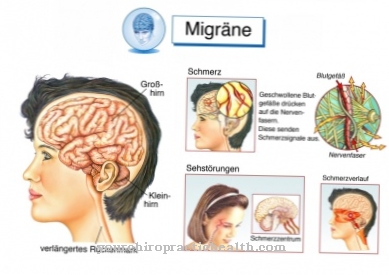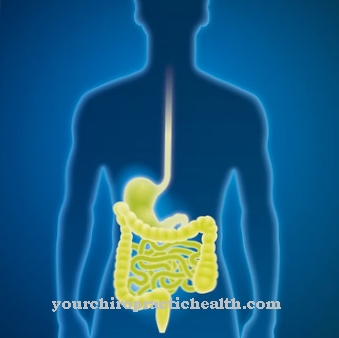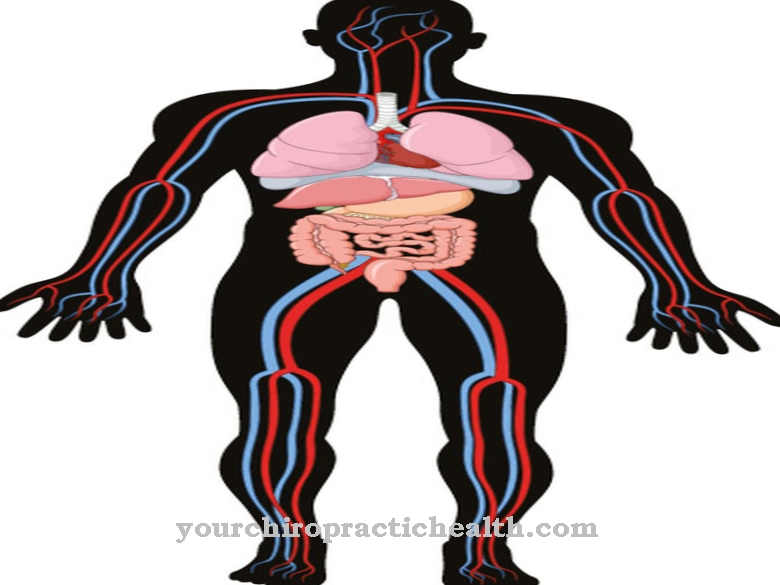The chronic myeloid leukemia (CML) is a special subtype of leukemia in which the white blood cells in the blood become ill and have a harmful effect on the entire organism. But how exactly can CML be diagnosed? And how can chronic myeloid leukemia be treated?
What is Chronic Myeloid Leukemia?

© peterschreiber.media - stock.adobe.com
In chronic myeloid leukemia, the white blood cells called leukocytes are affected. These blood cells are made from stem cells found in the bone marrow. The task of the white blood cells is on the one hand to destroy the pathogens and cell debris, but on the other hand also to support the immune system.
If you have CML, the leukocytes cannot mature completely and are therefore functionless. At the same time, there is a strong and continuous increase in the number of defective leukocytes in the blood and bone marrow.
If the chronic myeloid leukemia progresses, these leukemia cells displace the healthy blood cells, resulting in an acute shortage of red and functional white platelets and platelets.
The disease usually has no symptoms for several years and is therefore difficult to identify in the initial stage, the chronic phase. The CML must be differentiated from acute myeloid leukemia.
causes
The cause of a disease from chronic myeloid leukemia is usually the genetic disorder of the genetic make-up. The CML is usually the so-called Philadelphia chromosome, which is shortened and thus causes excessive activity of the tyrosine kinase.
This enzyme is then responsible for the drastic increase in the number of leukocytes in the blood. Doctors also name benzene, ionizing and radioactive radiation and viruses as risk factors for developing CML. However, the exact causes are still unknown despite the current state of medical research.
Symptoms, ailments & signs
Chronic myeloid leukemia is insidious and often causes no symptoms for years. Even in the early stages of the disease, a routine blood test may show an increase in white blood cells (leukocytes) and the presence of immature blood cells. The first noticeable symptoms are often reduced performance, tiredness, depressive moods and loss of appetite - these complaints are very unspecific and can also be caused by other, mostly harmless health disorders.
A clearer indication is a feeling of pressure in the upper abdomen, which is caused by the palpably enlarged spleen. Occasionally, this also causes back pain. If the disease progresses, an increased tendency to bleed is often noticeable through bleeding gums, nosebleeds and bleeding into the skin.
A deficiency in red blood cells is indicated by a noticeable pale skin and a significant drop in performance; shortness of breath and an increased pulse rate are also possible. The weakening of the immune system leads to an increased susceptibility to infections. Frequently occurring symptoms include fever with no apparent cause, increased night sweats and unwanted weight loss.
Chronic myeloid leukemia should be considered if these symptoms recur or persist for a long time. Without treatment, the symptoms usually worsen in the course of the disease, which can vary greatly from patient to patient.
Diagnosis & course
If chronic myeloid leukemia is suspected, the blood count is first thoroughly examined in the laboratory. In order to be able to fight the disease as quickly and effectively as possible, a bone marrow biopsy is also necessary. However, proof of the appearance of the Philadelphia chromosome is considered definitive proof of CML.
A disease from CML begins with the often symptom-free chronic phase. This is followed by the so-called acceleration phase. This stage is primarily characterized by a deterioration in the blood count, which increases the risk of bleeding, while at the same time the immune system deteriorates. Those affected then tend to have shortness of breath, paleness, a racing heart and a drop in performance.
This stage is usually followed by the so-called blast crisis, which manifests itself in the fact that the immature leukocytes, the blasts, are present in the blood in even greater numbers. If the disease is not treated for CML at this stage, this can be fatal for the patient within a very short time.
Complications
Chronic myeloid leukemia results in non-developed forms of leukocytes. It is therefore considered a neoplastic disease within the hematopoietic system. The symptom is not subject to any hereditary predisposition and cannot be transmitted in the manner of an infection. The changes directly affect the blood-forming stem cells in the bone marrow.
A genetic change caused by external circumstances is assumed to be the pathogenesis. Ionizing radiation, chemotherapeutic agents, benzene or viruses could possibly have a causative role. So far, all sufferers of chronic myeloid leukemia have the Philadelphia chromosome. The symptom occurs between the ages of forty and sixty, and the majority of sufferers are male.
In the beginning the symptoms are often misinterpreted. Which carries various complication risks. In general, those affected complain of sweating, attacks of fever, severe headaches and a significant reduction in performance. The immune balance decreases and the risk of infection increases. If the symptom is not clarified by a doctor in good time, leukemic thrombi can form.
The spleen enlarges and pain in the upper abdomen occurs. Sometimes it comes to a real splenic infarction. With the help of the meaningful blood count and the differential diagnosis, normalization of the condition and further spread of the disease are aimed for. Depending on the case, stem cell transplantation, chemotherapy or preparations from the tyrosine kinase inhibitor group are used. If the patient is too weak, circulatory problems can arise as complications.
When should you go to the doctor?
If chronic myeloid leukemia is suspected, a doctor should always be consulted. In particular, paleness, tiredness and unusual blood loss are symptoms that must be clarified by a doctor.
A feeling of pressure in the left upper abdomen indicates advanced leukemia - in this case, a doctor should be consulted immediately. Bleeding, increasing pain in the stomach area and the characteristic fever, which occurs independently of an infection, also require immediate clarification by the family doctor or a specialist.
People who have already had cancer are particularly at risk. An unhealthy lifestyle and exposure to environmental toxins and pollutants also seem to be related to the development of chronic myeloid leukemia. Anyone who belongs to these risk groups should speak to their doctor at the first warning signs. If there is a concrete suspicion, the oncologist or an internist can be visited. If complications already become noticeable, 112 or the medical emergency service should be contacted.
Doctors & therapists in your area
Treatment & Therapy
Chronic myeloid leukemia can best be combated with the help of tumor-specific drugs, so that the chances of a cure in many cases are very high. These so-called tyrosine kinase inhibitors inhibit the enzyme tyrosine kinase and thus ensure that the leukemia cells are pushed back.
During the treatment, you may experience minor symptoms such as fluid retention, muscle cramps or nausea. It is important for patients that they continue to have their blood and bone marrow examined regularly so that the success of the treatment can be recognized at an early stage. In addition, this method of treatment must be carried out permanently over a longer period of time in order to bring about complete healing.If treatment with tyrosine kinase inhibitors is stopped early, relapse occurs in frequent cases.
However, if the tyrosine kinase inhibitors do not work in the patient with CML, a bone marrow or stem cell transplant is considered. However, a suitable, healthy donor is required for this. But before the donor's blood stem cells are injected, the patient has to endure high-dose chemotherapy to destroy all of the leukemia cells. However, a transplant must be carefully considered beforehand as it can pose numerous risks.
Outlook & forecast
Before the treatment options for chronic myeloid leukemia that existed today, the prognosis for the disease was very poor. Without treatment, the average life expectancy of affected patients is only three to four years. The disease then typically always runs according to the scheme of chronic phase, acceleration phase and blast crisis. When the blast crisis phase is reached, life expectancy is only a few weeks.
With the drug therapy with tyrosine kinase inhibitors (TKIs) that is possible today, the chronic phase can be stabilized in such a way that even normal life expectancy is possible. By inhibiting tyrosine kinase activity, the continued proliferation of immature leukocytes is stopped. In some patients, after this treatment, the mutated multipotent hematopoietic progenitor cells can no longer be detected with the detection methods available today. However, it is not yet clear whether complete healing will then be achieved.
Stopping treatment could lead to the disease coming back up again. In rare cases, however, drug therapy does not work. Then a stem cell transplant must be carried out, which leads to complete healing, but can reduce life expectancy due to the side effects (rejection reactions, infections). It has been shown that lifelong therapy with tyrosine kinase inhibitors without complete cure is in many cases more beneficial for the patient than with stem cell therapy with complete cure.
prevention
Unfortunately, real preventive measures cannot be taken in chronic myeloid leukemia. In the case of the disease, however, it is necessary that the medication given is taken continuously over a longer period in order to avoid a relapse. The survival rate of CML is between 40 and 55 percent over a ten-year period, depending on the respective treatment method.
Aftercare
Chronic myeloid leukemia (AML) is a rarely occurring, malignant blood disease. The uncontrolled increase in white blood cells is caused by impulses from the spinal cord. Since the blood and the spinal cord are important vital centers, medical monitoring is essential after the acute treatment of chronic myeloid leukemia. Children of all ages also suffer from AML.
A specialist in hematology must regularly examine people with chronic myeloid leukemia. As a rule, it is a specialist in internal medicine with additional training. As long as the treatment is ongoing, the hematologist should be presented every three months, and later every six months.
If the symptoms worsen, the doctor should be consulted immediately. Close follow-up care is useful because leukemia can relapse. Social exclusion or psychological problems should be taken into account in the follow-up care. The reason for the long aftercare can be seen in the intensity of the therapies. The prescribed leukemia preparations are high-dose. Radioactive radiation can occur.
In addition, the knowledge of an incurable disease is a great burden for many people. In the acute phase, concentration on therapy dominates. Only after the end of acute treatment will the disease be processed in its entirety. Now the mental stress of chronic myeloid leukemia is more in the foreground.
You can do that yourself
Chronic myeloid leukemia progresses slowly and can usually be easily influenced by individually tailored drug therapy. Those affected can therefore usually maintain a largely normal everyday life and a high quality of life for a long time.
The prerequisite for this is the regular intake of the medication prescribed by the doctor and the consistent attendance of the check-ups. However, the diagnosis can put a heavy strain on your own psyche and your relationship with other people, so coping with the disease is of great importance:
An open approach to the disease and thorough information about the causes, treatment options and possible course makes it easier to adapt to the changed situation. In addition to the treating physicians, psychosocial and psycho-oncological counseling centers can also provide support, and the exchange with other affected persons in a self-help group can also be helpful.
A healthy lifestyle with a balanced diet and moderate physical activity strengthens the immune system and can contribute a lot to physical and mental well-being. In everyday life, sick people should plan regular breaks and adapt the requirements as far as possible to their own performance. The susceptibility to infection can be increased, especially at the beginning of the therapy: increased hygiene measures such as thorough hand washing, avoiding raw food and avoiding crowds protect against infection.






.jpg)




















